In the hundred-year history of independent Poland, assistance to wounded soldiers on various war fronts was provided by three humanitarian organizations: the Polish Red Cross, the Polish White Cross, and the Polish Green Cross. The Polish White and Green Crosses were established based on the principles of the Red Cross movement out of the need to provide assistance to those harmed during wartime, both soldiers and civilians. Their organization and functioning were modeled on the Polish Red Cross, and their founders (Helena Paderewska and Dr. Henryk Gnoiński) were familiar with the Red Cross movement and were even associated with our organization.
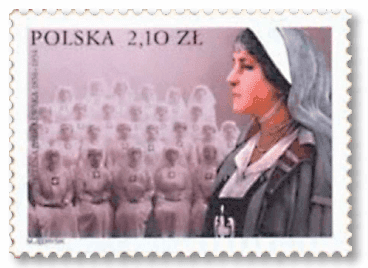
The Polish White Cross organization was established on February 2, 1918, in the United States during World War I. It was founded by Helena Paderewska, the wife of Ignacy Paderewski. The main goal was to provide aid to war victims.
In 1917, Helena Paderewska in the United States sought to transform and recognize the organization she had founded and was leading in the United States, called the Polish Soldiers Care Committee, into a national association of the Red Cross. However, the Polish Red Cross could not be established on American soil, outside the borders of Poland, because one of the conditions for the establishment of a national Red Cross association, set by the International Committee of the Red Cross in Geneva, was the signing of the Geneva Conventions by the government of an independent, sovereign state operating on its own territory. In 1917, Poland did not exist on the world map, and thus could not be a signatory to international agreements.
In light of the refusal of the International Committee of the Red Cross to establish a Polish branch of that organization in the United States, H. Paderewska organized and financed the recruitment of female volunteers for nursing service to send them to places where Polish soldiers conscripted into three armies – Russian, German, and Austrian – were fighting during World War I. She named the organization the Polish White Cross. The organization initially operated in the United States, where numerous gathered members collected materials and clothing for soldiers fighting in the country as well as volunteers for the army being formed in France (underwear, sweaters, bandage materials, socks, soap, tobacco). Polish parishes also joined the effort. The White Cross provided special care to the families of volunteers, especially in situations of the father's death or disability. The second statutory goal of the association, for which the White Cross became particularly known, was to promote culture and education, awaken patriotic attitudes, and national and civic awareness among Polish soldiers serving in the partitioning armies and, after the end of World War I, among soldiers in the active service of the Polish Army. Throughout the interwar period, the Red and White Cross organizations operated in parallel in Poland.
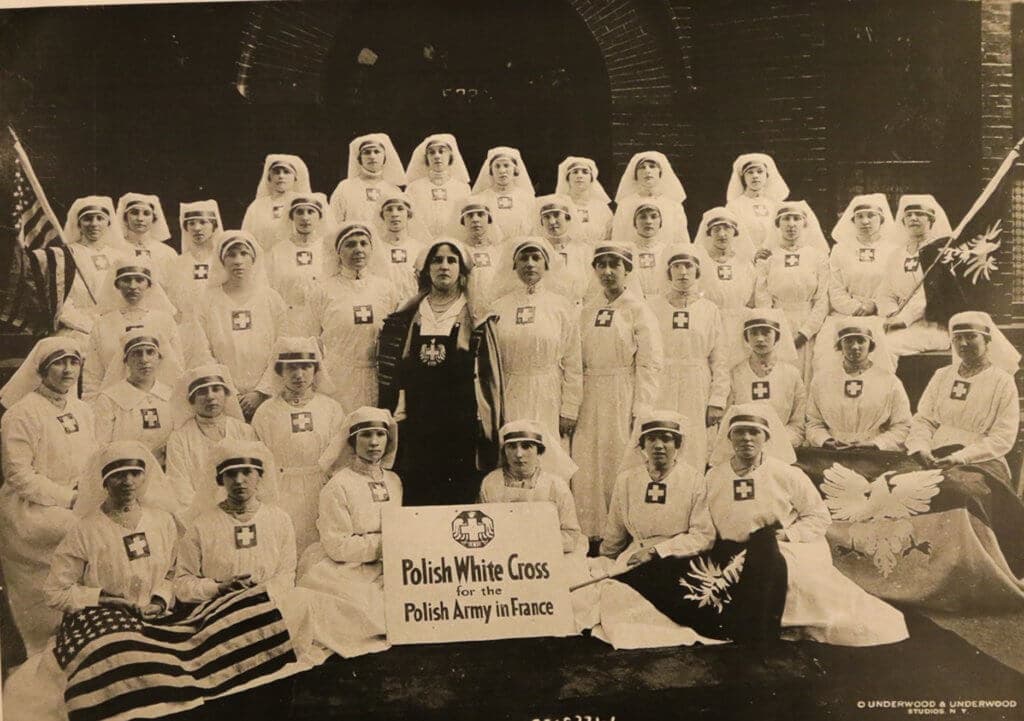
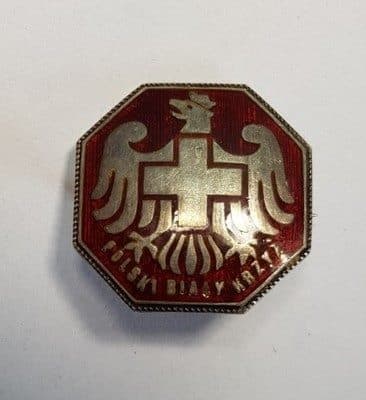
The Green Cross was established as a sanitary service called to take care of the wounded and sick soldiers of the Peasant Battalions and the civilian population. It was founded in 1942 as part of the People's Union of Women. Members of this organization, which was part of the peasant movement during World War II, took on the burden of providing assistance to people threatened by the occupier. Their tasks included organizing shelters and contact points, logistics for the Peasant Battalions, and care for the sick and wounded.
The Green Cross operated on the model of the Red Cross organization, and it was founded and conceived by Dr. Henryk Gnoiński, who had been associated with our organization since before the war.
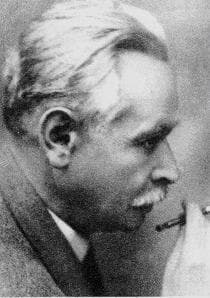
Dr. Gnoiński had been the director of the Blood Transfusion Institute, which he established and led in Warsaw for the Polish Red Cross since 1935. Dr. Gnoiński was the author of a popular brochure titled “On Blood Transfusion,” which offered a new perspective on blood as a therapeutic agent and marked the beginning of the practical realization of the idea of voluntary blood donation in Poland.
Before the outbreak of World War II, Dr. Henryk Gnoiński conducted extensive research on blood aimed at its safer use in medicine. With the outbreak of World War II, Dr. Gnoiński traveled to the eastern borders to organize blood transfusion stations, among others in Lublin, Zamość, Łuck, and Vilnius. He encountered great dedication from society – there were no shortages of donors, as blood was being collected at organized stations for wounded soldiers evacuated from the front. During the German occupation, Dr. Henryk Gnoiński worked in secret military units, and in 1942, he was appointed as the Chief of Sanitary Command for the Peasant Battalions and organized a sanitary service called the Polish Green Cross there.
The Peasant Battalions had very few doctors, so they had to rely on the work of nurses and ensure their proper training within the Green Cross. People working in the Green Cross mainly came from rural backgrounds and had no nursing education; therefore, doctors (around thirty are mentioned) and certified nurses conducted their training. Partisans also sent nurses to training courses in Warsaw, covering their stay in the city. In turn, those mentioned graduates trained other eager girls. In Lublin, doctors taught girls in small groups, and they were subsequently employed in local hospitals to avoid detection.
The medical education conducted by the Green Cross covered approximately 8,000 nurses and paramedics, focusing on rescue and caregiving. Paramedics wore the symbol of the green cross on white nursing caps or cloth veils.
In addition to caring for the sick and dressing the wounded, the Sisters of the Green Cross also supplied food to partisans, washed their linen, provided medicines, hid prisoners, helped in hiding Jews, transported weapons, etc. Sanitary teams equipped with first aid kits, stretchers, and other medical equipment existed at partisan units. The Green Cross existed until 1945.
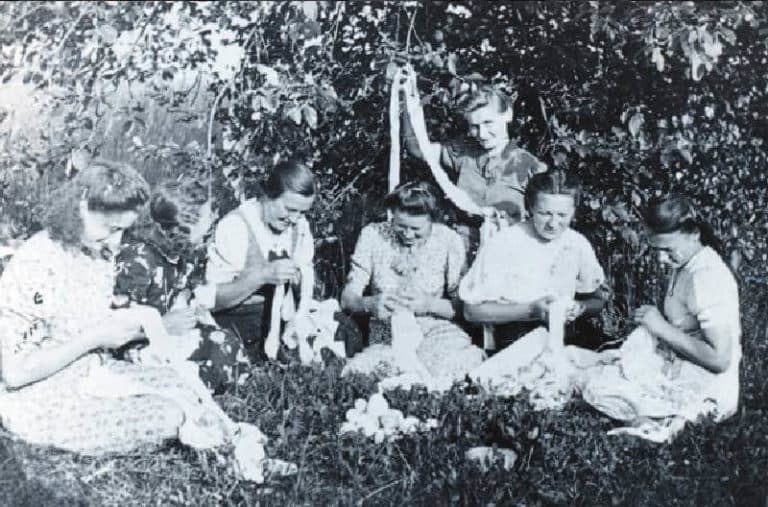
Facts about the Polish Red Cross
Only after the fourth request to the International Red Cross was the Polish Red Cross recognized on the international stage.
The beginnings of blood donation in the Red Cross date back to 1935, which took place 83 years ago.
If the borders of Poland had not been changed after World War II, the 100th anniversary of the Polish Red Cross (PCK) would have been celebrated with the Lviv, Volhynian, and Wilno branches, which are still active today but under the structures of different state associations.
The employees of the Polish Red Cross carried out the exhumation of Polish officers murdered in the Katyn Forest while also being responsible for creating the official Katyn Lists
The Red Cross movement and its foundations were the source for the establishment of sanitary services for wounded soldiers under the names Polish White Cross and Polish Green Cross.
Over the years, the rules for statutory financing of the PCK's activities have changed, as has our role and position within the state.
The PCK enjoyed immense public trust during the Second Polish Republic, and the most important figures in the state always spoke about our organization with the utmost respect.
To this day, in Tarnów, Małopolska, there is a nearly 100-year tradition of parades through the city organized on the occasion of the Polish Red Cross Week.
On February 8, 2018, it was 50 years since the establishment of the badge of the Honorable Blood Donor
On February 8, 2018, it marked 50 years since the establishment of the badge of the Meritorious Honorary Blood Donor
PCK never accepted any gratifications and did not support the Nazi authorities, thereby exposing itself to severe consequences.
The Polish Red Cross was the initiator of healthcare in rural areas during the interwar period and the establishment of the first village health centers.
PCK was involved in the construction of the Marshal Piłsudski Mound in Sowińca in Krakow in 1936
At the beginning of 1919, within the structures of the newly established Polish Red Cross Society, 3 District Branches of the PTCK were created: for Galicia, the Grand Duchy of Posen, and Silesia.
During its 100-year activity, the Polish Red Cross, the International Committee of the Red Cross, honored 102 Polish nurses associated with our organization with the Florence Nightingale Medal.
The Polish Red Cross was the organizer of parachuting courses
Did two Polish doctors working at the Red Cross hospital during World War II save more lives than Oskar Schindler?
There existed simultaneously the Polish Red Cross and the Polish White Cross, whose president was Helena Paderewska.
There was a time in the history of PCK when, legally, two or even three Main Boards of PCK operated simultaneously.
Help us endlessly
Thanks to the kindness and support of our Donors, we can help children, seniors, support medical rescuers, promote the idea of blood donation, and implement many other projects that save lives in times of conflict or humanitarian crises. Every donation and every form of support is significant because the Polish Red Cross connects those in need with those who want to provide help. Let’s help together!
See also
Over the years, the rules for statutory financing of the PCK's activities have changed, as has our role and position in the state.
During the interwar period, the Polish Red Cross held a privileged position in the state, benefiting from the provisions of the law granting it donations from the sale of tickets for various types of shows, performances, concerts, spectacles, competitions, etc.
19. The PCK employees conducted the exhumation of Polish officers murdered in the Katyn Forest while also being responsible for creating the official Katyn Lists.
After the Red Army entered Polish territory, thousands of Polish soldiers and representatives of the intelligentsia were taken into Soviet captivity. The NKVD placed them in special camps, having previously organized a selection for officers, non-commissioned officers, and privates.
You are currently viewing a page filtered by content from the department. Cała PolskaIf you want to view content from Cała Polskaclick the button